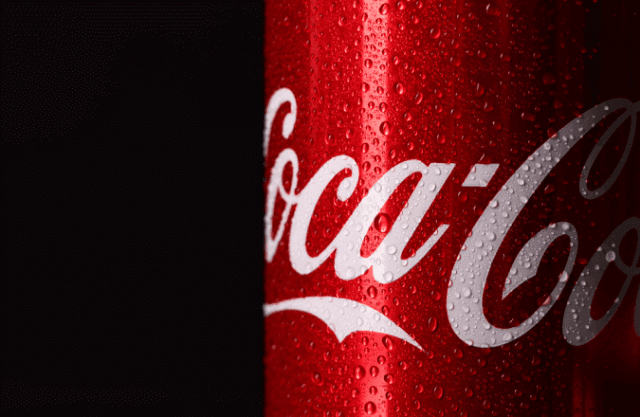How to trade Disney

Learn all about the Disney share price journey, Disney margin trading, and how to trade the share CFD with Capital.com.
What is Disney?
The Walt Disney Company, also known as Disney, is a multinational entertainment and media business based on Burbank, California. It was founded in 1923 by brothers Walt Disney and Roy O. Disney as a small animation study, which grew over the following decades into one of the largest and most recognisable media outlets in the world.
Today, a main component of Disney is its film studio division, the Walt Disney Studios, which is composed of Walt Disney Pictures, Walt Disney Animation Studios, Pixar, Marvel Studios, Lucasfilm, 20th Century Studios, and Searchlight Pictures. However, it also owns television networks such as ABC, ESPN, and the Disney Channel, as well as theme parks and resorts including Disneyland and Walt Disney World. Furthermore, it offers consumer products and interactive media, from merchandise and video game game creation to mobile apps and interactive experiences.
In the 2023 fiscal year, the company’s revenue amounted to some $88.9bn.
What is the Disney share price history?
The Disney share price history began in 1957 with its IPO on the New York Stock Exchange under the ticker symbol DIS. In the early years, the funds raised were intended to finance ongoing projects such as the development of Disneyland, and the share price grew alongside Disney’s expanded theme park and film successes. The 1960s saw expansion into new projects, including the conceptual development of what would become Walt Disney World, which eventually opened in 1971. More diversification followed into other areas of entertainment and media, growing the share price further.
In the 1980s, legal challenges and personnel changes hit the share price, but the arrival of Michael Eisner as CEO sparked a revitalisation of Disney’s film and television arms, boosting the stock. And in the 1990s, the success of pictures such as ‘The Little Mermaid’, ‘Beauty and the Beast’, ‘Aladdin’ and ‘The Lion King’ all increased the attractiveness of Disney’s shares.
This century, the Disney share price picked up following strategic acquisitions such as animation studios Pixar and comic book brand Marvel, and in the 2010s Lucasfilm, when it gained control of the Star Wars franchise. Streaming service Disney+ was launched in 2019, positioning Disney as a major player in direct-to-consumer streaming. In 2020, the Covid-19 pandemic saw its share price lose ground as the company’s theme parks were closed, film productions were halted and movie releases postponed. However, the stock recovered as streaming surged and optimism rose for vaccine rollouts.
However, 2021 and 2022 saw volatility for the stock as slowing growth in streaming, combined with challenging economic conditions in the form of rising inflation, interest rates and general uncertainty affected consumer spending. But the return of the celebrated Bob Iger as CEO encouraged the share price. The first half of 2024 saw the company focus on profitability and more streamlined operations across its core businesses, rewarded by share price improvement.
Past performance is not a reliable indicator of future results.
What factors might affect the Disney live share price?
The Disney live share price can be impacted by a range of key sector-specific fundamental events. Here are a few of the main factors that traders should watch out for.
-
Performance of core business segments: from its theme parks to media networks and film studio, there are many arms to Disney that can all perform differently at a given time. Those trading the stock should keep a close eye on the market developments central to the company’s success across all such components. Earnings reports can be an important insight into Disney’s general performance, too.
-
Streaming services growth: Disney+ and other streaming services (Hulu, ESPN+) are increasingly critical to Disney’s valuation. Rapid changes in subscriber numbers or churn rates can significantly affect the stock. The announcement of subscriber milestones may lead to movements in share price. Also, the strength and appeal of Disney's streaming content, as well as competition from other streaming services like Netflix and Amazon Prime, play crucial roles in attracting and retaining subscribers.
-
Regulatory and legal issues: changes in regulations affecting media and entertainment industries, such as antitrust laws or broadcasting rights, can impact Disney's operations and profitability. Legal battles or intellectual property disputes can also influence public perception and financial liability.
-
Economic conditions: broader economic factors, including market downturns or recessions, can negatively impact luxury or non-essential spending, including those services provided by Disney.
-
Leadership and strategy: leadership changes can affect strategic direction and investor confidence. For instance, Bob Iger's return as CEO was viewed positively by many investors. Strategic acquisitions (like Pixar, Marvel, Lucasfilm, and 21st Century Fox) have historically provided growth avenues for Disney, affecting its market valuation.
What are the Disney stock trading hours?
The Disney stock trading hours are Monday to Friday from 2:30am to 9:00pm (UK time), as the Nasdaq Stock Exchange and the Toronto Stock Exchange share the same hours.
If you choose to trade CFDs, you can follow the Disney stock performance live in euros with the comprehensive Disney share price chart.
Monitoring the company’s activity can help you to keep an eye out for any key fundamental or technical events that may affect short-term movements in the share value.
How to trade Disney shares with CFDs
If you want to take a position on Disney shares, you have two options. First, you can buy physical shares in the company through the exchange on which it’s listed. In this case, investing in Disney stock means you will own a share, or shares, in the company. This can be considered a long-term investment, as you’re hoping for the price to rise over time.
Alternatively, you can trade a derivative product such as a contract for difference (CFD) on the underlying Disney stock market price, and speculate on its price movements without actually owning the asset. A CFD is a financial contract, typically between a broker and a trader, where one party agrees to pay the other the difference in the value of a security, between the opening and closing of the trade.
Unlike physical share ownership, you can either hold a long position (speculating that the price will rise) or a short position (speculating that the price will fall). This is considered a short-term investment or trade, as CFDs tend to be used within shorter timeframes.
Another key difference between buying physical Disney shares and trading through a derivative is the leverage that can be employed with the latter. CFDs are traded on margin, which means that a trader can typically get exposure to larger positions with a relatively small outlay. This amplifies the potential profits, but also the potential losses, making such trading risky. You can learn how to trade shares in our comprehensive guide to shares trading, and find out more about trading vs investing with our handy guide.
To trade Disney stock CFDs with us, just sign up for a Capital.com account, and once you’re verified, you can use our advanced web platform or download our intuitive yet easy-to-use app. It’ll take just a few minutes to get started and access the world’s most-traded markets.
Why trade Disney CFDs with Capital.com?
Trading Disney CFDs with Capital.com means you’ll enjoy an intuitive, easy-to-use platform, 24/7 support, fair and transparent pricing, along with award-winning education to help build your experience in the markets.* You can seamlessly integrate our smart platform with elite third-party software TradingView and MT4, and refine your strategies with our risk-free demo.
*Awarded best-in-class for education at ForexBrokers.com’s 2024 Annual Awards
FAQs
Who owns Disney?
The ownership of Disney as of 2024 comprises individuals such as CEO Iger and executives such as Brent A. Woodford, Maria Elena Lagomasino, and Mary Barra. Institutions such as Vanguard and Blackrock also hold significant stakes.
How much are Disney shares today?
How much Disney shares are today is dependent on market conditions. If you’re trading this stock, it’s important to check out the Disney chart frequently to keep on top of price movements and therefore share price and market cap value, as well as retain a strong understanding of the fundamental and technical influences that can cause the price to shift.
What market is Disney listed on?
Disney is listed on the New York Stock Exchange under the ticker DIS.
How to invest in Disney?
You can invest in Disney through buying and holding the physical share via a stockbroker or investing platform, with the goal to buy low and sell high. Alternatively, derivatives such as CFDs can give you leveraged exposure to the underlying price without ownership. However, leverage amplifies both profits and losses, meaning it’s risky.
You can create a CFD account and start trading by clicking on the link below.
Visit our other complete guides

How to trade Coca-Cola
